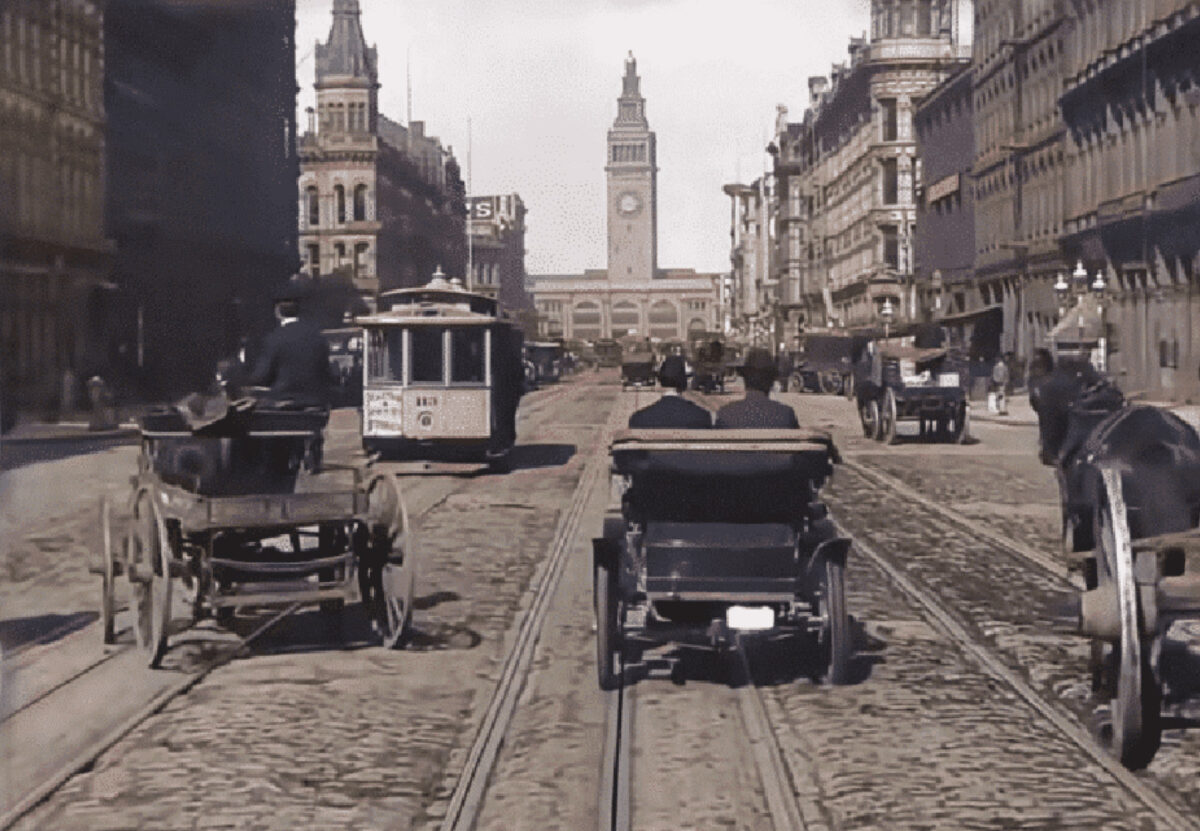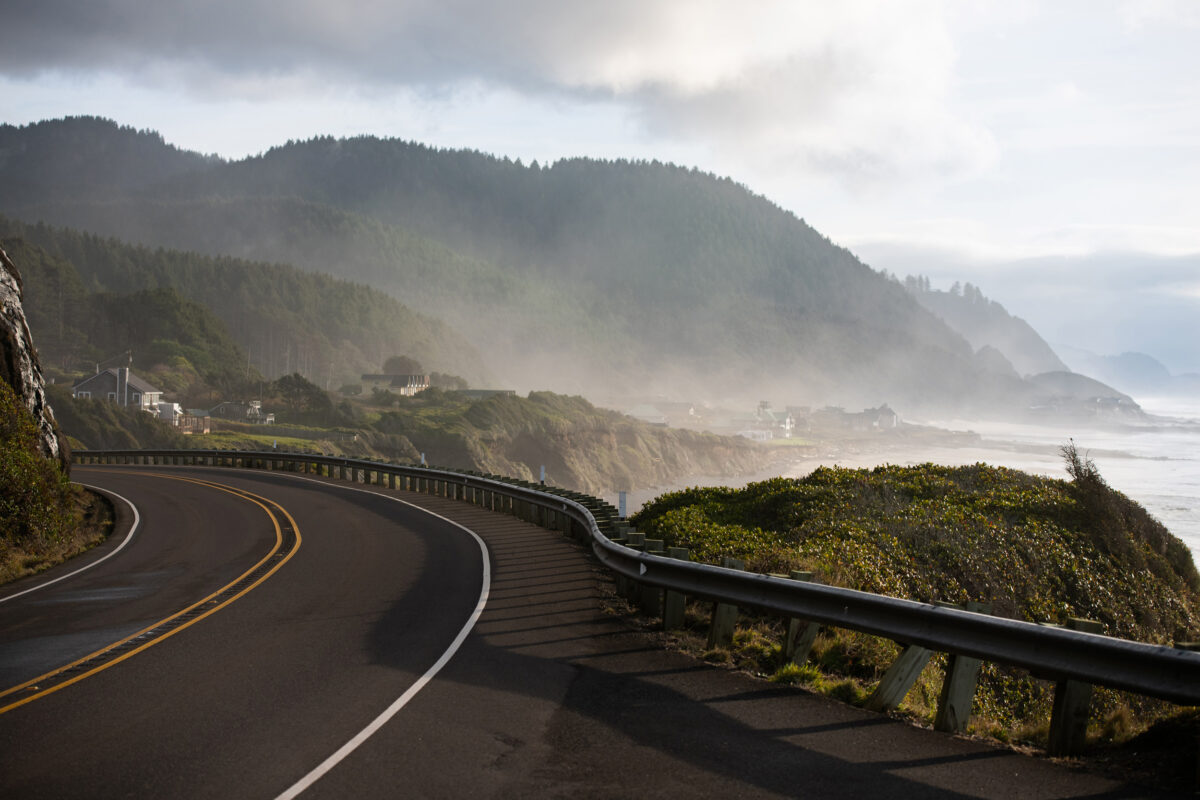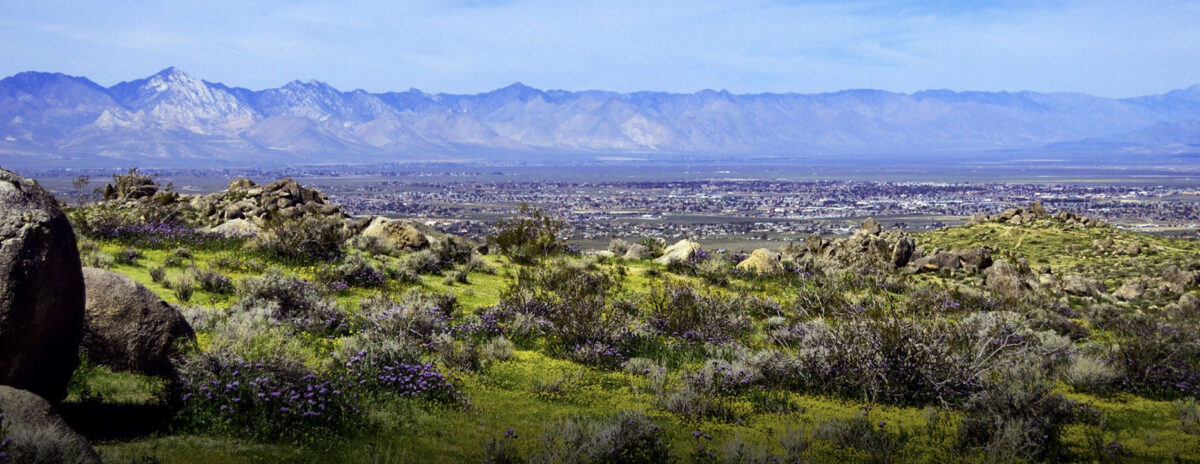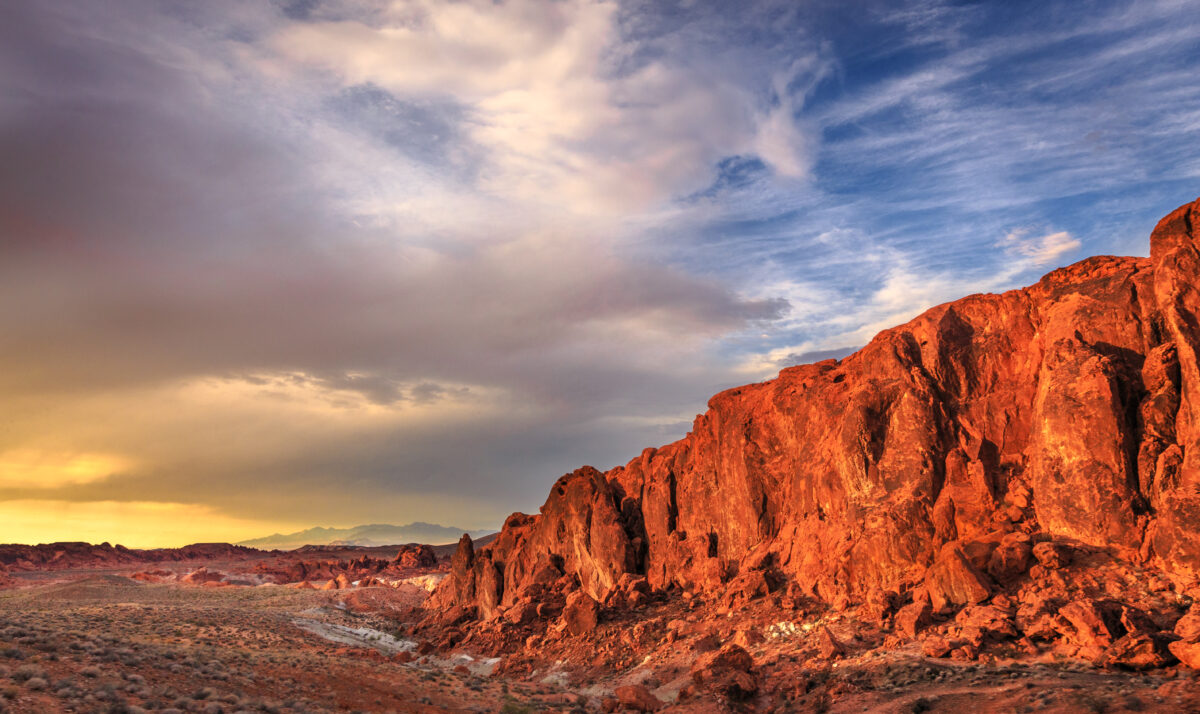In 1906 San Francisco experienced one of the worst natural disasters in history, an earthquake of 7.9 magnitude. What did we learn from the earthquake, and what changes did we implement after the earthquake? Have we done enough to prepare for the next big earthquake? In this article, we review discoveries related to geology, earthquake-induced fires, building performance, and the recovery process.
1906 San Francisco Earthquake Facts
- The earthquake epicenter was in the Pacific Ocean 2 miles west of San Francisco.
- 28,000 buildings were destroyed.
- The disaster claimed the lives of 3,000 people.
- Half of the population of San Francisco were left homeless.
- The earthquake caused water and gas mains to rupture in San Francisco. Leaking gas acted as a catalyst for fires that quickly spread throughout the city while the lack of water made it difficult to fight the fires.
- Damages from the earthquake and fires were estimated at $500 million.
- The San Andreas fault ruptured for a total of 296 miles.
A Great Leap in Earthquake Knowledge
In the previous article, we saw life post-earthquake from the eyes of the Miles brothers walking on Market Street. In this article, we’ll examine the scientific documentation released after the earthquake, and how the earthquake changed San Francisco forever.
The 1908 Lawson Report is considered the definitive document describing the Great 1906 San Francisco earthquake and its effects. Members from the self-formed commission included professors and professionals from the University of California, Berkeley, Stanford University, the Lick Observatory, the Chabot Observatory in Oakland, Johns Hopkins University and the U.S. Geological Survey. They surveyed many people’s experiences and explained the effects on the population (refer to Page 1-2, Introduction):
“In the zone of maximum disturbance persons who were awake and attending to their affairs were in many cases thrown to the ground. Many persons heard rumbling sounds immediately before feeling the shock.”
The 1906 earthquake released approximately 16 times more energy than the 1989 Loma Prieta earthquake. The committee conducted interviews and found that people felt the earthquake as far as Southern Oregon, Nevada, and Southern California. Seismometers across the globe in Europe and Asia even picked up the ground movement from the earthquake (Lawson Report, pg. 61a). See the image below for one seismometer’s recordings in 1906 and 1989 from Germany.
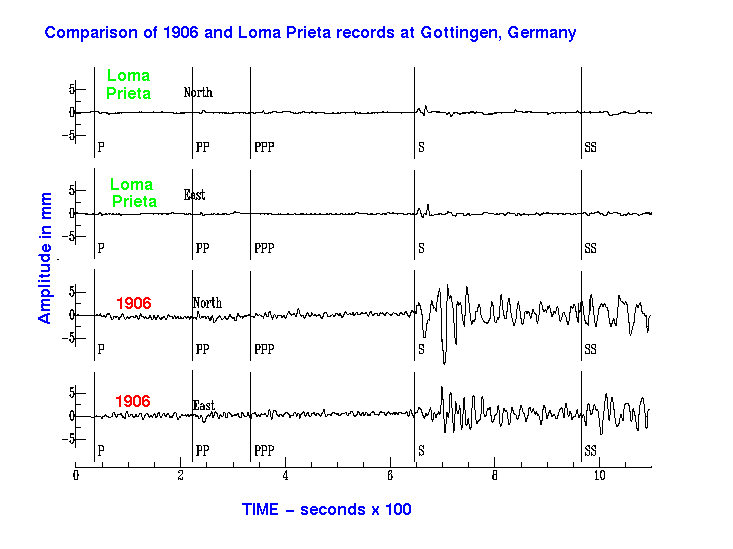
The Lawson Report explains in detail the scientific discoveries from the 1906 earthquake and the lessons learned. The three main lessons involved geology, fires, and structures.
The Naming of San Andreas Fault
Lawson led the team expedition measuring the earth’s surface along the exposed fault scarp for two years. The team discovered the full extent of the San Andreas fault in California, as well as the fault movements. The report describes the fault in detail for over 150 pages. Before the geological discoveries, the scientists were only aware of a few portions of the fault. The sketch below shows the known fault pieces before and after 1906.
The team found that the San Andreas fault ruptured over a length of 270 miles. The largest amount of movement between the two sides of the fault line (“displacement”) was 21 feet (Lawson Report, pg. 53). In comparison, the 1989 Loma Prieta earthquake caused a rupture length of 22 miles and a maximum displacement of 7 feet.
The geological investigations after the 1906 earthquake formed the original basis of what we know today about fault lines. Before 1906, people believed that earthquakes created fault lines instead of the other way around. From the Lawson Report data, Henry Reid developed the ground-breaking theory of elastic-rebound, that fault lines store up stress which gets released in cycles, and earthquakes are the release of that stress.
The City of Fire
Approximately 30 fires started from broken electric power lines and broken gas mains, as well as from broken chimneys. The ‘Ham and Eggs’ fire, one of the largest fires, began when a person lit their stove to cook their breakfast. The stove, connected to the broken chimney, ignited the roof of the house. The fires spread rapidly because many water mains were severed by earthquake shaking. This meant there was not enough water to fight the fires. Also, only 54% of the buildings in San Francisco had fireproofing at the time. This led to an unstoppable blaze that covered 492 city blocks in only three days.
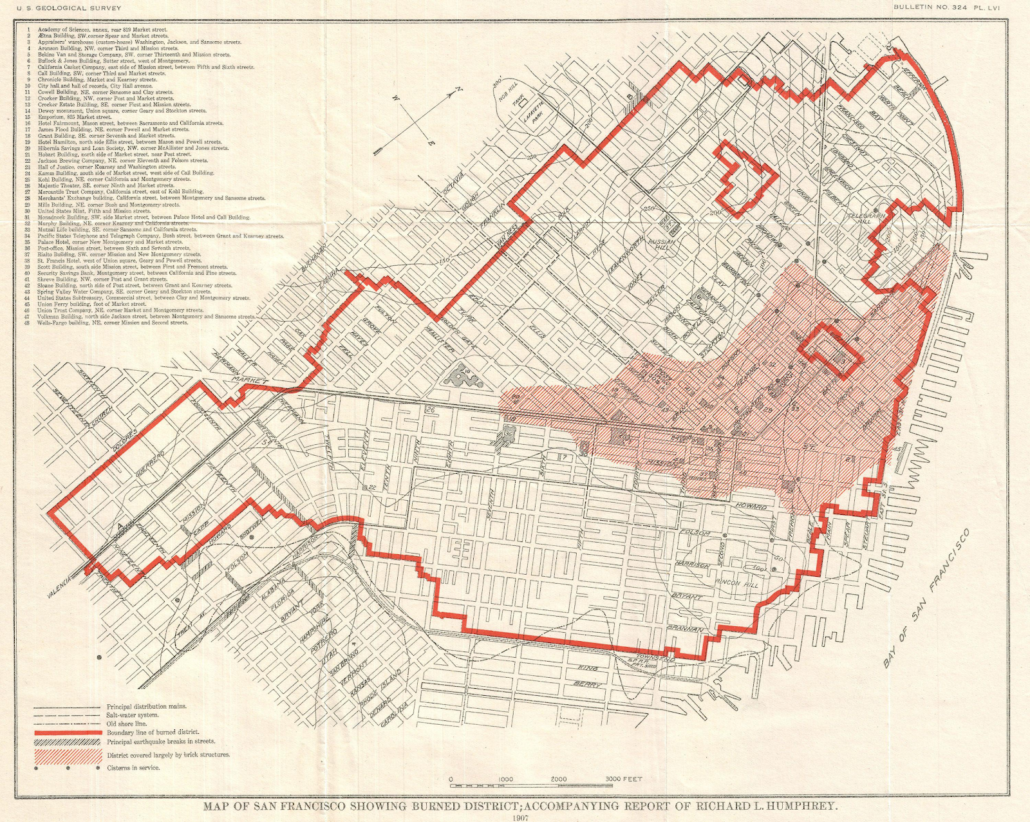
Most hydrants throughout the city had very little water, except for the “golden hydrant” at Church and 20th, which somehow maintained enough water pressure to help fight fires in the Mission district. The hydrant, now an icon and tourist attraction, is painted gold once a year on April 18th.
San Franciscans were quick to adopt changes that could prevent such devastation in a future fire. Ordinance No. 31 was passed on July 5, 1906, expanding the zones in the city that require fireproofing and placing restrictions on wood buildings. In 1912, San Francisco completed a high-pressure underground water supply system, a plan from the Fire Chief, Dennis Sullivan, so that the city would never be without water again.
In 1986, San Francisco updated the water supply system again, at the prompting of Fire Chief at the time, Frank Blackburn. His team determined that the 1912 water system wouldn’t be sufficient if another large earthquake hit the city. As a result, with widespread community support, San Francisco built a portable water supply system, which links hydrants to fireboats that use water from the Bay.
Monumental Building Code Changes
As San Francisco recovered, there was more emphasis on damage caused by fire than structural damage from earthquake shaking. One news article in 1906 reported, “It was not the earthquake, but the fire – the great terrible fire – that destroyed pioneer San Francisco.” The 1908 Lawson report, however, described damage from shaking as well as from the fires:
“About the Ferry Building, at the foot of Market Street… Here the fire burned fiercely and caused great havoc, heaping the streets and the cellars of buildings with fallen brick and stone and twisted beams and girders. For weeks after the conflagration many of the streets were completely hidden under the débris.
So much of the damage due directly to the shock was thereby concealed or obliterated, that no adequate knowledge of the direct effects of the earthquake could be obtained in this part of the city; though eye-witnesses tell of cornices and gables which fell, and of walls and roofs which collapsed at the time of the shock. After the fire had past, standing walls revealed ugly, sinuous cracks, in rudely parallel systems, which were not due to fire nor to dynamite.”
Market Street, as seen in the images from the new 1906 footage, represents one of the more impacted areas of San Francisco. The buildings built on human-made land, “landfill” (purple areas in the image below) saw the most damage. Market Street sunk, up to two feet in some places. Two inch-wide cracks opened in the ground, and during the earthquake, water was rising out of the cracks. The Lawson Report explained that Market Street needs to be “doubly prudent in the location and structure of its important buildings.”

The 1906 earthquake began to teach engineers and scientists important lessons. One lesson was the significance of identifying important buildings and setting performance objectives so that essential buildings can resume operations after an earthquake. Another lesson was the dangers of building on soft soils. In addition, the 1906 earthquake inspired professionals to form societies, which helped guide the development of government ordinances. Examples include the Seismological Society of America and Structural Engineers Association of California.
A few milestone changes include:
1925: Santa Barbara’s building codes were the first to include seismic provisions. Palo Alto followed in 1926.
1927: The first building code published in 1927 also included seismic design criteria, applied to all of California.
1976: The 1976 building code introduced “importance factors” to fully define and ensure that essential facilities, such as schools, hospitals, fire and police stations, and emergency transit centers, remain functional after a major earthquake.
San Francisco’s Great Recovery
While scientists learned a lot from the earthquake, it took decades for the scientific community to implement that new knowledge. Even so, San Francisco experienced a speedy recovery, even by today’s standards. By one week after the earthquake, people were using steam engines to pull down free-standing walls, and they were using dynamite to bring down unsafe buildings. By July 1906, San Francisco issued an ordinance (see image below) to landowners to remove all debris. And by April 1908, San Francisco had already been rebuilt.

San Francisco was better prepared when the next notable earthquake struck in 1989. The damage was less severe, mainly because of changes implemented because of the 1906 quake. The scientific discoveries from the Lawson Report and other engineering advances continue to save lives. Lessons learned in 1906 provided safer building codes and evacuation procedures. The city established a more reliable water supply and improved abilities to treat injured and keep order during a crisis.
There’s no need to wait for the next earthquake. Let’s keep learning so each of us can proactively prepare for the next Big One.
For further reading to learn more about the 1906 earthquake, refer to the collections of eyewitness accounts from SF Museum and NPR.
Reviewed by Victoria Chames. Original publish date April 18, 2019.
